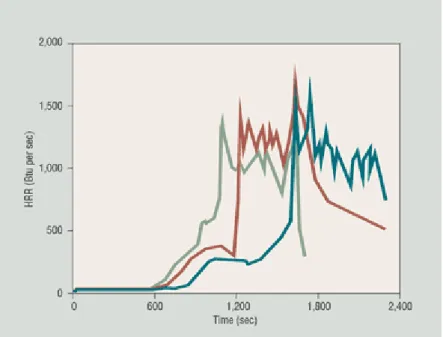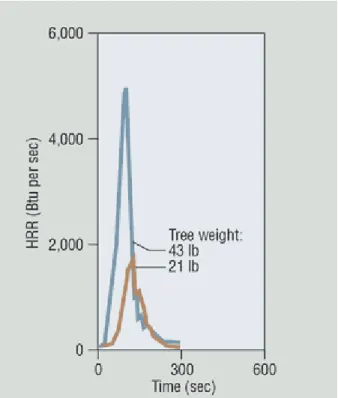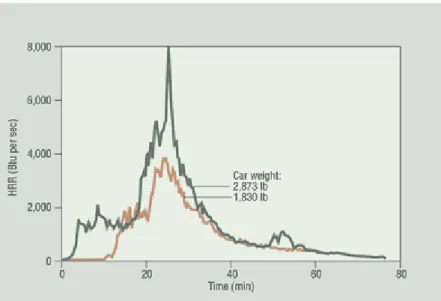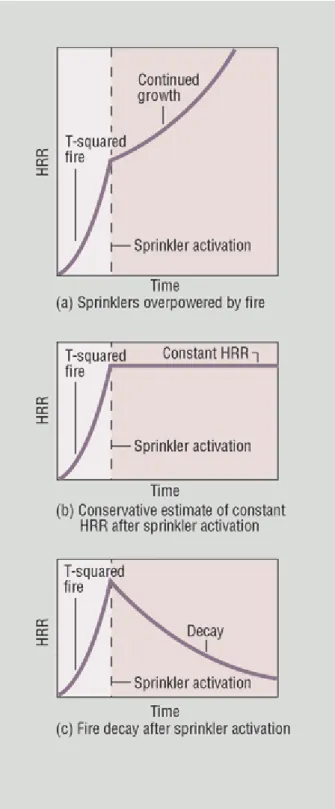Design fires – KLIMAPEDIA
Hele tekst
(2) Kennisbank Bouwfysica B-16; Fire Safety Engineering; Design fires. 3. Stages of Fire Growth Fires often are described in terms of stages of development (figure 1). Although these stages are useful for discussion, many fires do not go through all of them because of a lack of fuel or the action of a suppression system. The stages are:. figure 1.. the stages of fire development. • Ignition. Sometimes called the incubation period, the ignition stage is when a fire begins. Smoke management deals with the consequences of ignition, but not the cause of it. • Growth. Fire growth occurs with little or no influence from the compartment. This stage is characterized by an abundance of air. As the fire grows, the temperature in the room rises. A fire with sufficient combustion air is called a fuel-controlled fire, or described as burning in "free air." • Flashover. Flashover is a sudden change from an apparent steady fire confined to a relatively small space to a fire that involves a much larger space, such as the entire room. During the growth stage, a smoke layer forms under the ceiling. Materials throughout the room are subjected to thermal radiation from both the smoke layer and the flames. When the radiation reaches a certain level, some materials ignite. This is followed by other materials igniting, with the entire room eventually involved in fire. It only takes a few seconds for a room to flash over. In a very large space, such as an open office floor plan, only a portion of the space may flash over. The smoke-layer temperature at which flashover occurs generally is in the range of 930 to 1,300 F. The criterion for flashover sometimes is considered to be a smoke-layer temperature of 1,100 F or a radiant-heat flux of 1.8 Btu per square foot per second at the floor of the fire room. • Fully developed fire. Sometimes referred to as fully involved fires or post-flashover fires, fully developed fires have the highest temperatures. For small and medium-size rooms, the HRR of a fully developed fire depends on the amount of air that reaches the fire. Such a fully developed fire is ventilation-controlled. In a ventilation-controlled fire, the burning materials produce more volatile gases than can be burned in the room with the available oxygen. In this type of fire, flames consisting of burning volatile gases can be seen extending from open doorways of the fire room. In very large spaces, such as an open office floor plan, a fire may never become ventilationcontrolled. Fully developed fires are characterized by inefficient combustion and high 2 of 12 August, 2005.
(3) Kennisbank Bouwfysica B-16; Fire Safety Engineering; Design fires. production of carbon monoxide. The high levels of carbon monoxide make smoke from fully developed fires particularly hazardous. • Decay. As the fuel is consumed, the HRR of a fire and the temperature of the room drop. The fire then may change from ventilation-controlled to fuel- controlled. 4. Growth Stage The growth stage of fire development often is approximated by the idealized T-squared fire:. (eq. 1) where: Q=. heat-release rate of fire (Btu per second). t=. time after ignition (seconds). tg =. growth time (seconds). Equation 1 neglects the ignition stage of fire development. However, it generally is recognized that consideration of the ignition stage is not necessary for the design of smoke-management systems. When t equals tg, Q equals 1,000 Btu per second.. table 1.. fire-growth constants for T-squared fires. Table 1 lists growth times from NFPA 92B, Guide for Smoke Management Systems in Malls, Atria, and Large Areas,5 and NFPA 72, National Fire Alarm Code.6 Growth times from NFPA 92B are illustrated in Figure 2. In most publications about smoke control, the terms "slow," "medium," "fast," and "ultra-fast" fire growth refer to the NFPA 92B values.. 3 of 12 August, 2005.
(4) Kennisbank Bouwfysica B-16; Fire Safety Engineering; Design fires. figure 2. 5. relation of T-squared fires to fire-test data. Fully Developed Fire As already stated, the HRR of a ventilation-controlled fire depends on the amount of air that reaches the fire. The HRR of a fully developed fire can be expressed as a function of the ventilation opening as: (eq. 2) where: Q=. heat-release rate of fire (Btu per second). Aw =. area of ventilation opening (square feet). Hw =. height of ventilation opening (feet).. This equation applies to rooms with 300 sq ft of floor area or less, rooms of normal construction materials, and rooms with only one rectangular opening. Normal construction materials include drywall, concrete, masonry block, and brick, but not sheets or plates of steel, aluminum, and other metals. In a room with one door opening 3-ft wide and 7-ft high, Equation 2 indicates, the largest fire would be 3,400 Btu per second. This fire would be fully developed, with every object in the room involved in fire and flames flowing out of the doorway.. 4 of 12 August, 2005.
(5) Kennisbank Bouwfysica B-16; Fire Safety Engineering; Design fires. 6. Measurement of Heat-Release Rate In the early days of fire research, the determination of HRR during a fire was very crude. Typically, materials were burned on a load cell (scale), and the HRR was estimated from the mass loss and heat of combustion of the materials. If the load cell became too hot, the mass measurements were meaningless. Various schemes to keep the load cell from heating up were devised, but they all interfered with the measurements. The situation was made even worse when pieces of burning material fell from the load cell. Many of the items burned in determining HRR are composites of several different materials. For example, a desk might be made of wood, fiber board, and sheet plastic, with molded plastic doors and drawer fronts. Not only do these materials have different heats of combustion, they burn at different times during the course of a fire. For these reasons, HRR estimations from measured mass losses often are unreliable.. 7. Oxygen-Consumption Calorimetry For years, fire-research laboratories around the world worked to develop a method of calorimetry not subject to the problems of the method described above. What they came up with was oxygen-consumption calorimetry (also called oxygen-depletion calorimetry), a method based on the oxygen used up in a fire. Although oxygen-consumption calorimeters often have load cells, the mass-loss measurements from these cells are not used to calculate HRR. The key to this technology is that, for most materials, the heat released is almost constant, at 5,630 Btu per pound of oxygen consumed. Figure 3 shows furniture being burned under a hood connected to an exhaust so that all of the smoke is drawn into the exhaust. From measurements of the mass flow and oxygen content of the exhaust, the time rate of oxygen consumption and, thus, the HRR can be calculated. Because the oxygen is not completely consumed, the HRR calculations also include the effects of carbon monoxide and carbon dioxide.. figure 3.. an oxygen-consumption calorimeter.. When the HRR of one or more objects burning in a room is needed, a room calorimeter is used, as shown in Figure 4. The room calorimeter is the same as the one in Figure 3, with the exception that the hood is located above the door to collect all of the combustion gases. 5 of 12 August, 2005.
(6) Kennisbank Bouwfysica B-16; Fire Safety Engineering; Design fires. figure 4. 8. a room calorimeter. Heat-Release Rates of certain Objects When duplicate objects are burned, their heat-release rates will deviate from one another, as was the case with three retail-kiosk fires (Figure 5).7 The kiosks, including the T-shirts they contained, were as similar to each other as possible. The deviations in HRR were caused by a number of factors, including minor variations in the arrangement and composition of the Tshirts, the dimensions and materials of the kiosks, and nearby air currents. Despite these variations, the shapes and peaks of the three HRR curves were similar. Larger kiosks would have produced higher heat-release rates.. figure 5.. the heat-release rates of three similar kiosk fires, showing variation of fire-test data. The HRR of Scotch pine Christmas trees is in the range of 1,800 to 5,000 Btu per second, as shown in Figure 6.8 This is much higher than earlier HRR values obtained for spruce Christmas trees (500 to 650 Btu per second). Christmas-tree fires are of particular concern because of their ability to ignite other objects and produce very large fires.. 6 of 12 August, 2005.
(7) Kennisbank Bouwfysica B-16; Fire Safety Engineering; Design fires. figure 6.. the heat-release rate of a Scotch pine Christmas-tree fire. Furniture is a major part of the fuel load in many building fires. From a fire standpoint, the sofa possibly is the most significant single item of furniture. It is not surprising, then, that sofas were among the first things to be burned during the development of the oxygen-consumption calorimeter. Sofa HRR data measured in 1984 still are appropriate today (figure 7).9. figure 7.. the heat-release rate of a sofa fire. Figure 8 shows HRR data from automobile fires measured by Joyeux.10 The cars were made during the 1990s and had much higher heat-release rates than did those made during the 1980s. That may have been caused by the increased use of polymers and other non-metallic materials. A surprising finding of Joyeux was that a car fire in a parking garage can ignite an adjacent car.. 7 of 12 August, 2005.
(8) Kennisbank Bouwfysica B-16; Fire Safety Engineering; Design fires. figure 8.. 9. the heat-release rate of automobile fires.. Separation of Objects During the growth stage of fire development, fire spreads from the burning object to other objects. This can happen by contact with the flame or by thermal radiation. The idea of separation distance is useful for the evaluation of items likely to burn. Using the point-source radiant model, separation distance can be expressed as: (eq. 3) where: RSD =. separation distance from the center of the fire to a target (feet). Qr =. radiant heat release of the fire (Btu per second). qr,i =. intensity of thermal radiation needed for non-piloted ignition (Btu per square foot per second). An object that is RSD or closer to the fire is expected to ignite. The intensity of thermal radiation needed for non-piloted ignition varies from about 0.9 Btu per square foot per second for thin, easy-to-ignite materials to 1.8 Btu per square foot per second for thick materials. The pointsource radiant model is appropriate, provided that the distance from the center of the flame is greater than twice the diameter of the fire. The radiant heat release of the fire is: (eq. 4) Where: Q= Xr =. heat-release rate of the fire (Btu per second) radiative fraction. The radiative fraction depends on the material burned and the diameter of the fire, but for design applications, a value of 0.3 is common.. 8 of 12 August, 2005.
(9) Kennisbank Bouwfysica B-16; Fire Safety Engineering; Design fires. 10. Sprinkler Effectiveness Successful sprinkler operation results in the control or suppression of a fire. Hasemi11 reported sprinkler success rates in Japan of 98 percent for well-maintained systems and 96 percent for poorly maintained systems. For Australia and New Zealand, Marryatt12 reported a sprinkler success rate of 99 percent or greater for most occupancies. In the absence of comprehensive data, we can assume that in the United States, sprinklers have a failure rate of 1 to 4 percent. Based on NFPA13 data, a 2-percent failure rate would result in about 1,100 sprinkler failures in high-rise buildings and about 2,000 sprinkler failures in mid-rise buildings in the United States over a decade. Based on Hasemi's and Marryatt's reports, the cause of most sprinkler failures can be put into one or more of the following groups: • inadequate or no water supply; • failure of one or more sprinkler- system components; • fire overpowering the sprinklers. Fast-growing fires, shielded fires, and fires starting in unsprinklered spaces can overpower a sprinkler system. Some fires grow so fast and are so large by the time a sprinkler activates that the sprinkler droplets evaporate before they reach the fire. An example of a shielded fire is high shelving that blocks sprinkler spray from reaching the shelves' burning contents. Typically, overpowering fires occur when the use of a space is inappropriate for the sprinkler system. In our world of ever-changing organizational functions, materials, construction methods, and architectural designs, it is reasonable to expect that new sprinkler-failure situations will arise. For this reason, sprinklered buildings need other fire-protection features to assure an adequate level of protection in the event of sprinkler failure. Figure 9 illustrates T-squared fire growth with: (a) sprinklers overpowered by fire, (b) a constant HRR maintained, and (c) a reduction in HRR. For a fire to be suppressed, the HRR likely would have to decrease after sprinkler activation, as in figure 9c. But when data about HRR decay is insufficient, a constant HRR after sprinkler activation (figure 9b) is recommended.. 9 of 12 August, 2005.
(10) Kennisbank Bouwfysica B-16; Fire Safety Engineering; Design fires. figure 9. 11. three design-fire curves.. Sprinkler Activation The response-time index (RTI) is a measure of sprinkler responsiveness. It can be obtained through the plunge test, by which a sprinkler is "plunged" into a heated oven in which heated air is circulated. The RTI of standard sprinklers varies from about 140 to 280 ft1/2 s1/2, while the RTI of quick-response sprinklers varies from about 50 to 100 ft1/2 s1/2. 10 of 12 August, 2005.
(11) Kennisbank Bouwfysica B-16; Fire Safety Engineering; Design fires. Actuation depends on the RTI, gas temperature, and velocity near the sprinkler. In a fire, a jet of hot gases flows radially from where the smoke plume intersects the ceiling. Computer programs that use correlations for such a ceiling jet have been developed to predict actuation time. 12. Summary While some codes prescribe design-fire size, an understanding of the topic is important in smoke-control design. A design fire needs to take into account transient fuels. Transient fuels are materials that are in a space temporarily. For buildings with few or no materials that can burn, a design fire of at least 2,000 Btu per second is recommended to account for transient fuels. The growth stage of fire development can be approximated with the T-squared fire of Equation 1. The size of a fully developed fire depends on the amount of combustion air that reaches the fire. Equation 2 gives the HRR of a fully developed fire in a room with only one opening. The HRR of objects is measured in an oxygen- consumption calorimeter. HRR data for many things are available. Thermal radiation from a burning object is expected to ignite a nearby object, provided that the two objects are close enough to each other. The separation distance of Equation 3 can be used to predict when thermal radiation will cause ignition of a second object. The effectiveness of sprinklers is an important factor that needs to be taken into account in the determination of a design fire.. `. REFERENCES 1. ICC. (2000). International building code (sec. 909.9). Falls Church, VA: International Code Council. 2. ICBO. (1997). Uniform building code (sec. 905.6.1). Whittier, CA: International Conference of Building Officials. 3. BOCA. (1999). The BOCA national building code (sec. 922.2.1.1) (14th ed.). Country Club Hills, IL: Building Officials and Code Administrators International. 4. SBCCI. (1997). Standard building code. Birmingham, AL: Southern Building Code Congress International. 5. NFPA. (2000). Guide for smoke management systems in malls, atria, and large areas. NFPA 92B. Quincy, MA: National Fire Protection Association. 6. NFPA. (1999). National fire alarm code. NFPA 72. Quincy, MA: National Fire Protection Association. 7. Mitler, H.E. (1996, March). Input data for fire modeling (pp. 187-199). Paper presented at 13th meeting of the UJNR Panel on Fire Research and Safety. NISTIR 6030. Gaithersburg, MD: National Institute of Standards and Technology. 8. Stroup, W.D. (1999). Scotch pine Christmas tree fire tests: report of test FR 4010. Gaithersburg, MD: National Institute of Standards and Technology. 9. Lawson, J.R., Walton, W.D., & Twilley, W.H. (1984). Fire performance of furnishings as measured in the NBS furniture calorimeter, part I. Gaithersburg, MD: National Bureau of Standards.. 11 of 12 August, 2005.
(12) Kennisbank Bouwfysica B-16; Fire Safety Engineering; Design fires. 10. Joyeux, D. (1997). Natural fires in closed car parks: car fire tests. INC @ 96/294d @ DJ/NB. 11. Hasemi, Y. (1985, May). Analysis of failures of automatic sprinklers in actual fires (pp. 794807). Paper presented at UJNR Panel on Fire Research and Safety, Eighth Joint Meeting, Tsukuba, Japan. 12. Marryatt, H.W. (1988). Fire--a century of automatic sprinkler protection in Australia and New Zealand 1986-1986. North Melbourne, Australia: Australian Fire Protection Association. 13. Ahrens, M. (1997). Special analysis: sprinkler status and the extent of flame and smoke damage in high-rise and mid-rise structure fires reported to U.S. public fire departments 1986-1995. Quincy, MA: National Fire Protection Association. A member of HPAC Engineering's Editorial Advisory Board, John H. Klote, PE, DSc, is a noted authority on smoke movement and smoke management, a distinction attributed to the large body of research he conducted over 19 years with the National Institute of Standards and Technology. Today, he heads his own consulting firm, providing practical solutions to various fire-protection problems. He has taught short courses and authored three books, chapters of various handbooks, and more than 80 papers and articles on smoke management and other aspects of fire protection. His latest book, "Principles of Smoke Management," is published by the American Society of Heating, Refrigerating and Air-Conditioning Engineers and the Society of Fire Protection Engineers.. 12 of 12 August, 2005.
(13)
Afbeelding
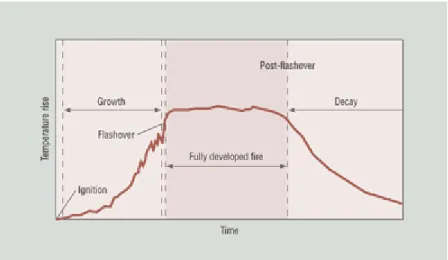
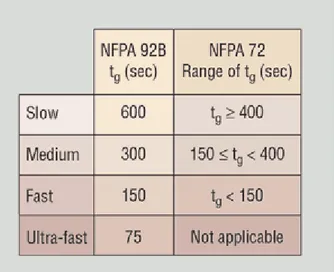
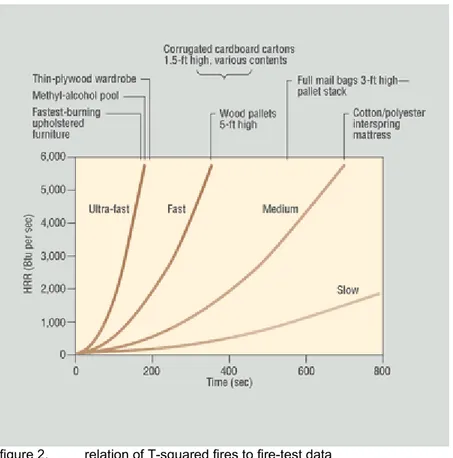
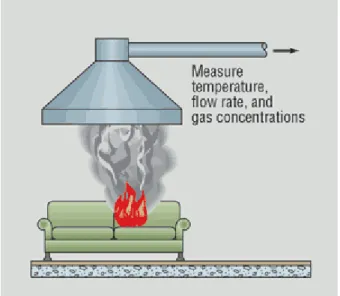
GERELATEERDE DOCUMENTEN
5 of the 6 (23%) fatal domestic fires in 2011 which started in furniture, had not developed further than the object in which the fire started at the moment the fire brigade arrived
Aan de noordzijde van de sleuf werd wel een kleine zone met uitbraakpuin en zachte mortel aangetroffen, deze sporen kunnen eventueel afkomstig zijn van de kerk. •
Hij verdient per eenheid product meer door producten en diensten te leveren waar de maatschappij om vraagt en deze slim in de markt te zetten, bijvoorbeeld door zijn producten
Tijdens het korven in het najaar van 2002 zijn 16 kreeften aangetroffen, die zijn overgezet naar een geschikt bevonden vijver elders op het Landgoed.. Volgens extrapolatie kwam
The estimated tMRCA of the epidemic inferred from the original pol data set (only containing sequence information from the full-length isolates) placed the origin of the
The core area in the forest of Sungai Wain is one of the last rain forests areas in the Balikpapan–Samarinda region of East Kalimantan not severely affected by fire, logging or
Geographical coverage parallels the focusses of the three branches of the Nationaal Herbarium Nederland (Africa, south of the Sahara; Malesia; South America, especially the
oorspronkelijke flora zich nog herstellen van de branden in Oost-Kalimantan, maar doordat de bosbranden als gevolg van menselijke verstoring sterk zijn toegenomen zal het
